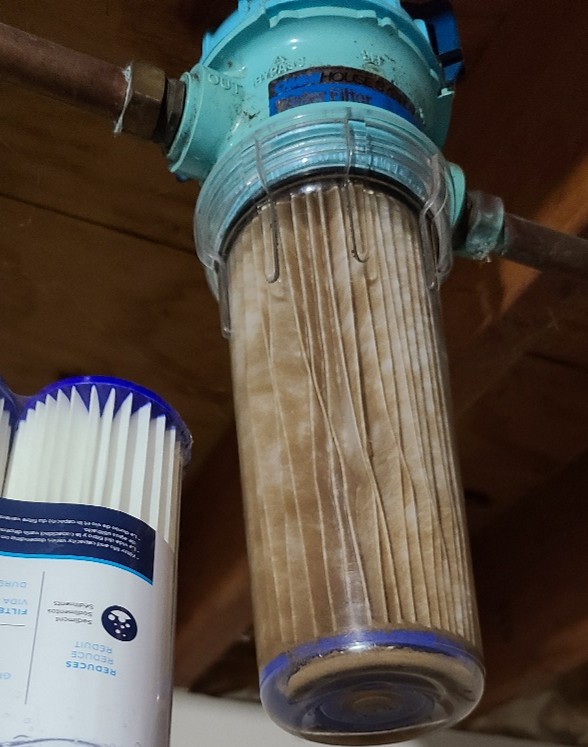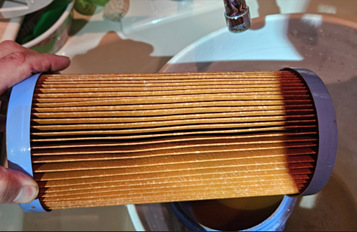What is Water Hygiene?
Water hygiene refers to the cleanliness of plumbing, encompassing all activities that help maintain water quality in a water system and prevent a variety of water-related issues. Much like personal hygiene, water hygiene is maintained through a series of tasks that may change depending on the unique needs of a water system. Water hygiene is applicable to all steps of a water system, including wells, water treatment plants, distribution systems, and premise plumbing systems.
Why should I care about Water Hygiene?
Unfortunately, like personal hygiene, water hygiene is voluntary. Unless periodic maintenance is required by a Guidance or Standard, many system operators opt out of water hygiene practices to save time or money. This may seem like a harmless thing, but it can have unintended consequences, including the following:
- Corrosion and Plumbing Failures
- Lead Copper Rule exceedances
- Repeat Total Coliform and coli positives
- Excessive Heterotrophic Plate Counts
- Presence of Legionella and other waterborne pathogens
- Taste, Odor, and Aesthetic issues
In the same way personal hygiene benefits the individual and the people around them, so does water hygiene; by performing water hygiene tasks, system operators extend the lifespan of treatment systems and infrastructure while maintaining safe water for consumers.
Changes in plumbing design and operation over the years have significantly impacted water hygiene in plumbing systems. The use of water efficient fixtures in new construction and retrofitted into older plumbing has significantly reduced water usage volumes and flow rates. This reduction in water use increases the potential for accumulation of debris in the service line and in downstream plumbing, which increases microbiologically influenced corrosion (MIC), reduces water quality, increases the risk for waterborne pathogens and hinders water hygiene. The following changes generally occurred in plumbing systems because of the Energy Policy Acts of 1992 and 2005 (EPAct 1992, EPAct 2005):
- Toilet demands went from about 5 to 7 gallons per flush (toilet installed before 1982) or 3.5 gallons per flush (toilet installed from 1982 to 1992) to demands of 0.9 to 1.1 gallons per flush after 2005.
- Bathroom faucets went from a 2.2 gpm flow rate to about 1.0 gpm, with some motion detecting faucets flowing at 0.35 gpm.
- Showerheads went from a 5.5 gpm flow rate to about 2.5, with some showerheads flowing at 1.8 gpm.
- According to Wisconsin Public Service Commission data, average residential water usage in Wisconsin dropped from 136 gallons per day in 2005 to about 105 gallons per day in 2015, which remained unchanged through 2023 (usage of about 42 gallons per person per day). This impact may be greater in areas of the US with water supply limitations.
- Data are not readily available regarding commercial buildings. Based on numerous corrosion studies performed by WQI, the use of water efficient fixtures reduces water hygiene, increases plumbing corrosion, increases biofilm growth and increases the presence of biofilm containing Legionella and other waterborne pathogens.
How do I know if my water system’s Hygiene is Sufficient or Insufficient?
A water system’s water hygiene relies heavily on the system’s characteristics and operations. Issues can occur depending on the water system operator’s approach to water quality. A lot of water system operators stick to the activities and testing required by guidelines and regulations and assume compliance means they are achieving quality water. Although this is true for regulated contaminants, some regulations put water systems at a disadvantage in relation to water quality. Mentioned above, the EPAct 2005 push for water efficient fixtures in plumbing systems has decreased pipe scouring velocities obtained at a fixture and throughout the plumbing system, which would remove settled debris that can contribute to water quality issues. This results in the unintended consequences of high water-age, debris accumulation, and water quality issues. To account for these unintended drawbacks by current regulations, water system owners and operators can implement basic water hygiene practices, even if they are not required by governing entities.
Water hygiene activities are designed to mitigate the following factors that challenge water quality:
- Challenging Source Water Quality (nutrients and biofilm)
- Treatment System Needs
- Water Stagnancy
- High Water Age
- Water Velocities (too high or too low)
- Insufficient Water Temperatures and/or Disinfection Residuals
Each system requires a water hygiene approach that is tailored to their unique needs. To determine the efficacy of your system’s current water hygiene practices, WQI offers assessments of water quality at various points in a water system. For a plumbing system, this assessment would determine where water quality worsens in a system and which water hygiene practices should be added, modified, or discontinued. Water hygiene is a dynamic process, with activities added or adjusted depending on specific water quality needs and operational limitations. WQI is available to help assess your water hygiene needs.
Authored by: Katie Maegli

Figure 1:
Above, a fresh, unpackaged filter is shown beside the sediment filter currently in-use. Sand can be seen accumulated at the bottom of the filter housing.
Below, a filter out of its housing to show discoloration and need for replacement.

